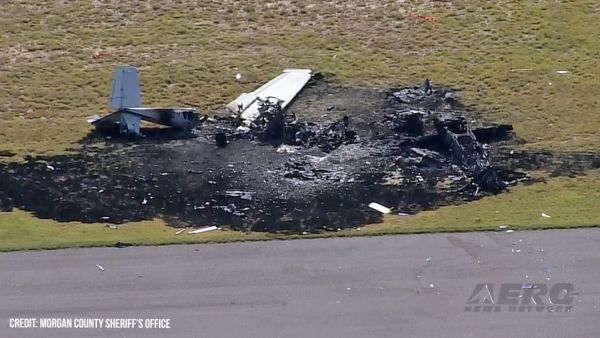Extends Mandatory Repack Interval To 180-Days
 Skydivers and pilots who use parachutes will get an extra 60
days between mandatory repacks of their parachutes, under a revised
regulation published Thursday by the Federal Aviation
Administration (FAA). The rule change was praised by the two
organizations which had jointly sought it for nearly four years,
the Parachute Industry Association (PIA) and the United States
Parachute Association (USPA).
Skydivers and pilots who use parachutes will get an extra 60
days between mandatory repacks of their parachutes, under a revised
regulation published Thursday by the Federal Aviation
Administration (FAA). The rule change was praised by the two
organizations which had jointly sought it for nearly four years,
the Parachute Industry Association (PIA) and the United States
Parachute Association (USPA).
The revision extends from 120 to 180 days the period between
required inspection and repacking by a certificated parachute
rigger. It takes effect December 19, 30 days from publication in
the Federal Register.
The rule applies to reserve parachutes worn by all skydivers and
smoke jumpers, as well as emergency parachutes worn by pilots of
aerobatic airplanes and gliders, air crew members, and the growing
number of military special ops jumpers using commercial "off the
shelf" parachute equipment.
"The 180-day repack rule change is a fine example of what PIA
and USPA can accomplish working as one," said PIA President Cliff
Schmucker. "Together we will endeavor to continue improving safety
for parachute users."
"This result shows what can happen when two organizations like
USPA and PIA decide to work together on common goals," added USPA
Executive Director Ed Scott. "We look forward to doing even more
together for the benefit of skydivers."
USPA first petitioned the FAA for an exemption in 1998, but its
initiative was rejected in 2001 for what the FAA found was lack of
full industry support. Allen Silver, chair of the PIA’s
Rigging Committee, reignited discussion with the FAA in early 2005
and USPA joined to form a task group which submitted a joint
petition to the FAA.
 Other organizations whose members use parachutes also joined
the effort, including the Aircraft Owners and Pilot Association,
the Experimental Aircraft Association and the Soaring Society of
America.
Other organizations whose members use parachutes also joined
the effort, including the Aircraft Owners and Pilot Association,
the Experimental Aircraft Association and the Soaring Society of
America.
Initially, the group sought an exemption from the 120-day rule,
but the FAA determined that an exemption would be too broad and a
rule change was more appropriate. It published its proposal for
change in May 2007,
as ANN reported.
The FAA said in approving the change that it had received 338
comments about it during the four-month comment period; only eight
commenters explicitly opposed the new rule.
In justifying the extension, the FAA cited "new reliability data
from the parachute industry and other sources" which indicated that
modern materials and construction techniques made it safe to allow
parachutes to remain packed for a longer period.
"Recently acquired data from the US military, foreign aviation
authorities, and parachute industry representatives suggest that
the current 120-day packing interval is too short, " the FAA said.
"Numerous experts asserted that modern parachute materials last
longer when the packing interval is longer than 120 days and that
too-frequent packing shortens the life of the materials. Those
experts found the parachutes’ porosity was affected by
handling and manipulation of the parachute while being packed."
The longer repack cycle is consistent with US military parachute
regulations, as well as with regulations in many foreign countries.
The FAA noted that it has for some time allowed many foreign
skydivers visiting the US to use reserve parachutes that comply
with their countries’ regulations, "and many of those foreign
parachutists’ countries had much longer repack
intervals."

No accident or incident reports over the past seven years had
implicated material failures in those parachutes, the FAA said.
The FAA last addressed the repack cycle in 1978, when it
increased the repack period from 60 to 120 days. In making that
change, the FAA noted that modern parachutes were constructed of
synthetic materials far less subject to degradation than parachutes
made of silk, cotton, and other natural fabrics.
 Classic Aero-TV: Brazilian Hummingbird Alights in U.S.
Classic Aero-TV: Brazilian Hummingbird Alights in U.S. ANN FAQ: Contributing To Aero-TV
ANN FAQ: Contributing To Aero-TV ANN's Daily Aero-Linx (09.01.25)
ANN's Daily Aero-Linx (09.01.25) ANN's Daily Aero-Term (09.01.25): Receiver Autonomous Integrity Monitoring
ANN's Daily Aero-Term (09.01.25): Receiver Autonomous Integrity Monitoring NTSB Prelim: Rockwell International 112
NTSB Prelim: Rockwell International 112





